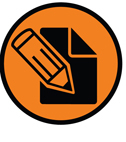Document Type
Publicity
Publication Date
Fall 11-10-2015
Embargo Period
1-13-2016
Event Date
June 1, 2016
Keywords
MDOCS, Storytellers' Institute, Fellows, fact, fiction
Abstract
This postcard was created with information to pass out to potential Institute Fellows applying for the 2016 Storytellers' Institute.
Details about the 2016 Storytellers' Institute:
The theme for the 2016 Storytellers' Institute is "fact and fiction." Documentary films, podcasts, exhibitions and other works are evidence-based stories, working with facts to render, reveal, and represent truth(s) to inform and, at times, inspire action. Despite relying on real people, events and events documentaries engage because of the way they interpret and represent reality (Lamarre 2009). In the words of John Grierson (1926) (considered the father of the term "documentary"), a documentary film is a "creative treatment of actuality." Tools in a documentarian's kit are many -- and many that shape reaction and response are not that different than those deployed for fictional works "based on a true story" (Zero Dark Thirty, Oliver Stone?): reenactment, sound and visual effects, editing, reordering, narration. Increasingly "hybrid" documentary works approach and may even cross the boundaries of fact and fiction, mixing evidence and challenging the public to think about the line between documentary and so-called "creative" work. At the other end of the spectrum, not only are many narrative works "based on" a true story, but an increasing number -- think of this year's Walk the Line and Our Brand is Crisis--adapt existing documentary features into dramatic work. Replicate. Reproduce. Reveal. In 2010, NY Times film critic AO Scott asked "How real is a documentary: observing that reality is "everywhere you look, taking dizzyingly protean forms." Participants in this summer's Institute will What is the line? Reenactment of crime scenes (Thin Blue Line, 1988) or 18 c Parisian Sound networks .... what director Allie Light calls "emotional equivalents." archival recordings and images to create a mood, sound added after the fact? Reenactment presented as unscripted activity (Nanook of the North, 1922) or as archival footage (Stories We Tell, 2012)? A story "found in the editing room" reorganizing order or selectively revealing a "character" among many? Documentarians of all kinds regularly break the 'rules' but at what point is re-representation a step too far? All documentary works are, in the end, stories shaped by their authors to sway an audience. The Summer 2016 Storytellers' Institute invites submissions from documentarians working in the borderlands of fact and fiction, grappling with the question of truth in storytelling, to join us for five weeks of creative work and interrogation.
Recommended Citation
Wakeman, Jesse, "MDOCS Flyer-2016-06-01, Storytellers' Institute Fellows postcard" (2015). MDOCS Publications. 70.
https://creativematter.skidmore.edu/mdocs_files/70
Included in
Digital Humanities Commons, Film Production Commons, Graphic Design Commons, Illustration Commons, Oral History Commons, Photography Commons, Public History Commons, Visual Studies Commons


